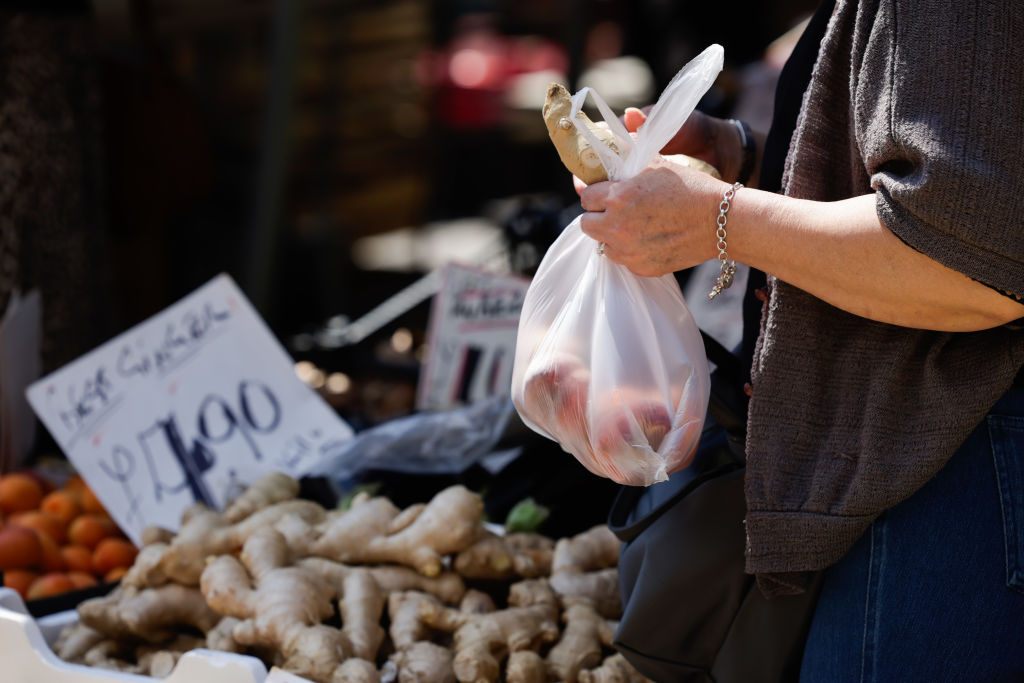UK inflation rate ‘back to normal’ in shops BRC says amid retail discounts drive
The UK inflation rate for stores is now at its lowest level since November 2021, the British Retail Consortium has said. But food prices have been continuing to climb.


The UK inflation rate in shops has gone ‘back to normal’, the British Retail Consortium (BRC) has said, thanks to discounting on furniture and electricals.
The overall annual rate of price hikes in UK stores, including high street shops and supermarkets, fell to 0.6% in May, the retailer trade body’s monthly shop price index found. This was down slightly on the 0.8% it recorded in April and is the slowest rate of growth the BRC has recorded since November 2021.
Price cuts on audio-visual equipment, such as TVs, meant the rate of non-food price cuts continued to go up. Annual deflation now sits at 0.8%, up from 0.6% the previous month. However, food prices continued to rise at a relatively fast rate.
MoneyWeek
Subscribe to MoneyWeek today and get your first six magazine issues absolutely FREE

Sign up to Money Morning
Don't miss the latest investment and personal finances news, market analysis, plus money-saving tips with our free twice-daily newsletter
Don't miss the latest investment and personal finances news, market analysis, plus money-saving tips with our free twice-daily newsletter
The news comes just days after it was announced headline inflation - as measured by the Consumer Prices Index (CPI) - had fallen to 2.3%. Despite now being close to the Bank of England’s 2% target, sticky services inflation may have delayed any base rate cuts, experts have warned.
BRC: ‘food inflation rate remains high, but has stabilised’
The BRC’s latest analysis of shop price inflation, which it runs in conjunction with data analysis firm NielsenIQ, measured shelf prices in stores across the country from 1 to 7 May. It then compared them month-on-month, as well as with the same week in May 2023.
Food prices kept the overall inflation figure out of negative territory, with the annual rate of hikes in the category hitting 3.2%. This figure was a slowdown on the 3.4% recorded in April, meaning food inflation has now been coming down for 13-consecutive months, and is at its lowest ebb since February 2022.
However, part of the reason why the figure has fallen so much is down to how high food inflation was in May 2023. This time last year, the inflation rate for the category was a whopping 15.4%. This month’s figure should be seen as being in addition to that rapid rate of growth.
Within the food statistic, fresh food slowed to an annual inflation rate of 2% - the lowest level seen since November 2021. Shelf prices for ambient food items - products you would find away from refrigerator aisles in supermarkets, like pasta and crisps - continued to grow quickly, jumping 4.8% compared to last year. This figure was 0.1 percentage points lower than what the BRC recorded last month.
Explaining the latest findings, BRC chief executive Helen Dickinson said: “Shop price inflation has returned to normal levels. Ambient food inflation remained stickier, especially for sugary products which continued to feel the effects of high global sugar prices.
“In non-food, retailers cut furniture prices in an attempt to revive subdued consumer demand for big-ticket items, and football fans have been able to grab some bargains on TVs and other audio-visual equipment ahead of this summer’s Euros.”
On top of the improved figures, NielsenIQ said it had seen “some improvement” in consumer sentiment. But it added that next month’s inflation data could show even greater falls as relentless wet weather had “dampened retail sales” and forced an increase in store promotional activity.
BRC calls for retail policies in general election 2024 manifestos
Alongside the latest inflation data, the BRC also said it wanted to see more support announced for the retail sector during the general election campaign. The UK public will go to the polls on 4 July.
The trade body represents thousands of retailers, including most of the country's largest supermarkets. It's CEO, Helen Dickinson, said: “Retailers are playing a key part in bringing inflation down, but future government policy must support this too. Retail plays a key role in every part of the country, from the smallest village to the largest city, employing millions of people, and serving millions more.
“As the cost burden of new policies rises - from business rates to packaging taxes – this affects not just the businesses, but their customers too. With an election in a matter of weeks, it is vital that parties detail their support for customers and retailers in their upcoming manifestos.”
We have rounded up all the commitments that have been made so far by the Conservatives and Labour Party.
Get the latest financial news, insights and expert analysis from our award-winning MoneyWeek team, to help you understand what really matters when it comes to your finances.
Henry Sandercock has spent more than eight years as a journalist covering a wide variety of beats. Having studied for an MA in journalism at the University of Kent, he started his career in the garden of England as a reporter for local TV channel KMTV.
Henry then worked at the BBC for three years as a radio producer - mostly on BBC Radio 2 with Jeremy Vine, but also on major BBC Radio 4 programmes like The World at One, PM and Broadcasting House. Switching to print media, he covered fresh foods for respected magazine The Grocer for two years.
After moving to NationalWorld.com - a national news site run by the publisher of The Scotsman and Yorkshire Post - Henry began reporting on the cost of living crisis, becoming the title’s money editor in early 2023. He covered everything from the energy crisis to scams, and inflation. He also has bylines in MoneyWeek.
-
 Why Trustpilot is a stock to watch for e-commerce exposure
Why Trustpilot is a stock to watch for e-commerce exposureTrustpilot has built a defensible position in one of the most critical areas of the internet: the infrastructure of trust, says Jamie Ward
-
 Tetragon Financial: An investment trust with stellar returns
Tetragon Financial: An investment trust with stellar returnsTetragon Financial has performed very well, but it won't appeal to most investors – there are clear reasons for the huge discount, says Rupert Hargreaves
